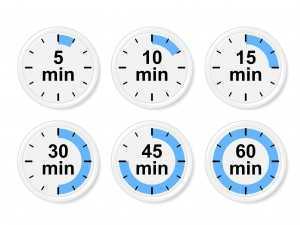In Suzuki, students often begin lessons at a young age – say 3 or 5. So the immediate caregiver (usually one of the parents) is in charge of making sure the child has time and space to do a Suzuki  practice. Sessions don’t have to be long – it’s based on what stage the child has reached in his or her ability development and how much material the instructor is able to cover during a lesson.
practice. Sessions don’t have to be long – it’s based on what stage the child has reached in his or her ability development and how much material the instructor is able to cover during a lesson.
Set Your Routine Early On
If you have started Suzuki lessons with your child, where will you begin in your practicing journey? Start by setting good habits early on. Ed Kreitman, Suzuki pedagogue and author of the book Teaching from the Balance Point, writes that, “Practice is the ‘work’ part of developing technique on the instrument” (75). In other words, when a student practices, he is developing a skill, whether it is the physical element of holding up the violin comfortably, or refining his ear to be able to tell when something is “in tune.”
The Parent’s Role
The parent is in charge of making sure that a Suzuki practice session is set up well – especially for young children. The parent is an attentive listener during the child’s lessons, taking notes, perhaps snapping a photo or shooting a video of what the teacher is asking the child to do.
Then, the parent becomes the ‘home coach’ or ‘home teacher.’ The parent looks up the notes, sets the agenda for the Suzuki practice session, and then sees that the child is able to successfully complete the exercises. Now, with very young musicians, this could include setting up the foot chart, placing the bow in the child’s hand properly, or even doing a clapping rhythm with the child.
 For older students, the parent is still an important figure, helping to identify when something is correct, or perhaps giving pointers on posture tips the teacher suggested. (For example, “Can you balance the marble on the f-hole? Let me watch.”) The parent also becomes an expert in telling when a piece is “ready” for a performance – or in letting the teacher know if the child is having some frustration with a certain passage or technique.
For older students, the parent is still an important figure, helping to identify when something is correct, or perhaps giving pointers on posture tips the teacher suggested. (For example, “Can you balance the marble on the f-hole? Let me watch.”) The parent also becomes an expert in telling when a piece is “ready” for a performance – or in letting the teacher know if the child is having some frustration with a certain passage or technique.
Because the parent is such an integral part of the practicing session, he or she becomes a key support of the child’s musical lifestyle. Parents pick up on children’s needs, in and outside of the music world – and this is an important element that teachers appreciate. Face it – students don’t always tell the teachers when something is hard or it hurts. But a parent can have a “sixth sense” feeling about it when something is really serious, and will be able to express that to the teacher.
How Often Do You Practice?
Shinichi Suzuki suggested the following regimen: “Practice only on the days you eat.”
Practicing every day is a truly positive method for encouraging a child’s skill development. When a child gets into the routine of daily practice, he will come to expect success and progress – and practice time. He’ll remind you, sometimes, “Mom, are we going to practice?” And yes, you will. Daily. If all you did this week was get his bow to stay straight on the violin, that is still a major victory. Why? Because you’ll be using that skill for the rest of your musical life.
Review: Why It Is Important in Suzuki Practice
 Suzuki practice sessions are usually founded on the concept of review. You review the skills you have learned so that you can build upon them when you reach a new element. For example, let’s think about the straight bow on the strings. If a child learns to control his bow at the very beginning, it will make “Twinkle, Twinkle, Little Star” sound and look very good. But it will also enable the child to do tougher things, like bow circles in “Allegro” or, further down the line, up bow spiccato in “Country Dance” in Book 5.
Suzuki practice sessions are usually founded on the concept of review. You review the skills you have learned so that you can build upon them when you reach a new element. For example, let’s think about the straight bow on the strings. If a child learns to control his bow at the very beginning, it will make “Twinkle, Twinkle, Little Star” sound and look very good. But it will also enable the child to do tougher things, like bow circles in “Allegro” or, further down the line, up bow spiccato in “Country Dance” in Book 5.
The nice thing about using the Suzuki method is that review of techniques is usually not done by using many exercise books. Instead, you use different musical pieces to refresh your technique. Does your teacher want you to work on deep tone? She might pull out the “Waltz” from Book 2. Are you struggling with staying in a certain position? Perhaps the teacher will ask you to play all the “Twinkle” variations in fifth position. You take something you can do well, and try it in a new way to create a new learned technique.
Nuts and Bolts of Technique Refinement
Many teachers – especially at institutes – will have dice that children toss, to figure out how many times they work a technique every day. Other teachers will just say, “How old are you? Okay, you need to practice this (eight) times perfectly every day.” Maybe it sounds daunting – or perhaps it’s easy. But it is important.
Doing a technique eight times in a row – perfectly – is really the best way to iron a skill into your mind. And, it’s just good life experience. There’s nothing like reaching the second to last repetition, and bombing it, and starting over. Life lesson – if you can survive repeating this exercise over at age six, then you can probably survive other disappointments that happen later in life.
Scheduling… and Breaks… and Dangers
 Getting back to the daily practice theme, it is a good idea to have a set schedule for your practice time. For some families, practicing first thing in the morning is the best way to fit it all in. Get up a little early, practice, and then get to school or work or whatever is on your schedule. For other families, the best time to do a Suzuki practice session is after school, or in the evening, when everyone is somewhat more relaxed.
Getting back to the daily practice theme, it is a good idea to have a set schedule for your practice time. For some families, practicing first thing in the morning is the best way to fit it all in. Get up a little early, practice, and then get to school or work or whatever is on your schedule. For other families, the best time to do a Suzuki practice session is after school, or in the evening, when everyone is somewhat more relaxed.
Can you take weekends off, or skip practicing while on vacation? Well, that is up to you. Some families believe that it necessary to not practice on Sundays. You have to work with your own schedule and beliefs.
However, it is a good idea not to ‘make up’ lost practice time with a super-long session over one day. Practicing is like dripping water on a rock – one drip won’t make that much difference, and a whole bucket of water at once doesn’t affect the rock, either. If you haven’t practiced for a week, then spending three hours in one day is going to exhaust you and your child, and may lead to injury. But if you keep at it, in a slow and steady way, you’ll work new learning grooves into your brain and you’ll see your technique develop – without the danger of injury.
How Long Do You Practice?
How long should you practice? It varies with each child. Most small children can’t handle long sessions – so do something shorter. Have a brand-new beginner? Try five minute sessions. As the  child grows in her ability, you can add more minutes to each Suzuki practice session. Take it gradually – time is on your side. Your child is young, and is still growing.
child grows in her ability, you can add more minutes to each Suzuki practice session. Take it gradually – time is on your side. Your child is young, and is still growing.
Sometimes, the practice session just won’t go well. There are very few prodigies who beg to practice at a young age. Face it, the ‘newness’ of music will wear off, and your child will dodge it, just like brushing teeth or feeding the cat. And sometimes, it just won’t be a good time to practice.
What can you do? Number one, remember, you are the practice coach. A sports coach doesn’t take “I don’t want to” for an excuse to skip practice. You can’t, either. Your job is to gently, yet firmly, guide the child into the practice session and get it done. Chances are, once your child is in the middle of the practicing, he’ll forget his frump about practicing and will be just as excited as ever to finally play “Lightly Row” without dropping the toy car off the violin.
But if there is sickness or injury, or just a hard day, cut back. Many years ago, the Suzuki teacher Craig Timmerman said that even a five-minute practice session would count towards the daily practicing routine. If that’s all you can handle on one day, at least you’ve been able to do that much.
Practice Clubs – Why They Work and How You Can Do Them Too
Practicing is definitely the surest way to encourage progress in your child’s music ability. Some teachers like to implement a Suzuki practice plan for their programs. For example, maybe your program has a 100-day club, for kids who have practiced a hundred days in a row without missing one day. Or perhaps you’ll see, at a Suzuki institute, a special time when students who have been practicing for several years in a row are honored for their commitment. That can be so inspiring. When you and your child see the kids who have been doing it for five or even ten years, that makes you want to do it too. You can be just as impressive as those ‘big kids’ who play such hard music. (And, it’s fun to be on the other end, getting your picture taken for having been so dedicated to your sport of music.)
 Now, what happens if your Suzuki program doesn’t have a practicing plan? Volunteer to set one up. Chances are, the instructor will appreciate your efforts and will enjoy the success a practicing program can bring.
Now, what happens if your Suzuki program doesn’t have a practicing plan? Volunteer to set one up. Chances are, the instructor will appreciate your efforts and will enjoy the success a practicing program can bring.
Try a thirty day plan – set up charts to color in, or fill with stickers. Give thirty slots for the kids to fill in, one for each day of practice. Create a reward at the end of the contest – see if your local ice cream shop or pizza parlor will offer free coupons to music students who reach the point of success. (There’s nothing like seeing rows of filled-in charts dancing up on the wall of the ice cream parlor, either. Good advertisement for the Suzuki studio, and a real sense of accomplishment for the child!) Then, let it progress from there. Take it from thirty days to sixty, for the hearty souls who want to continue. And from sixty, go to ninety – and 100 is just ten days off from there.
Remember, when you set up a Suzuki practicing schedule, you are preparing your child for success. A child cannot attempt to play hard stuff until she has mastered the easy stuff – that’s the way building block pieces work. Your daily practicing will build strength, skill, and endurance, both in the physical and in the emotional world. And these are really good life lessons to learn.







